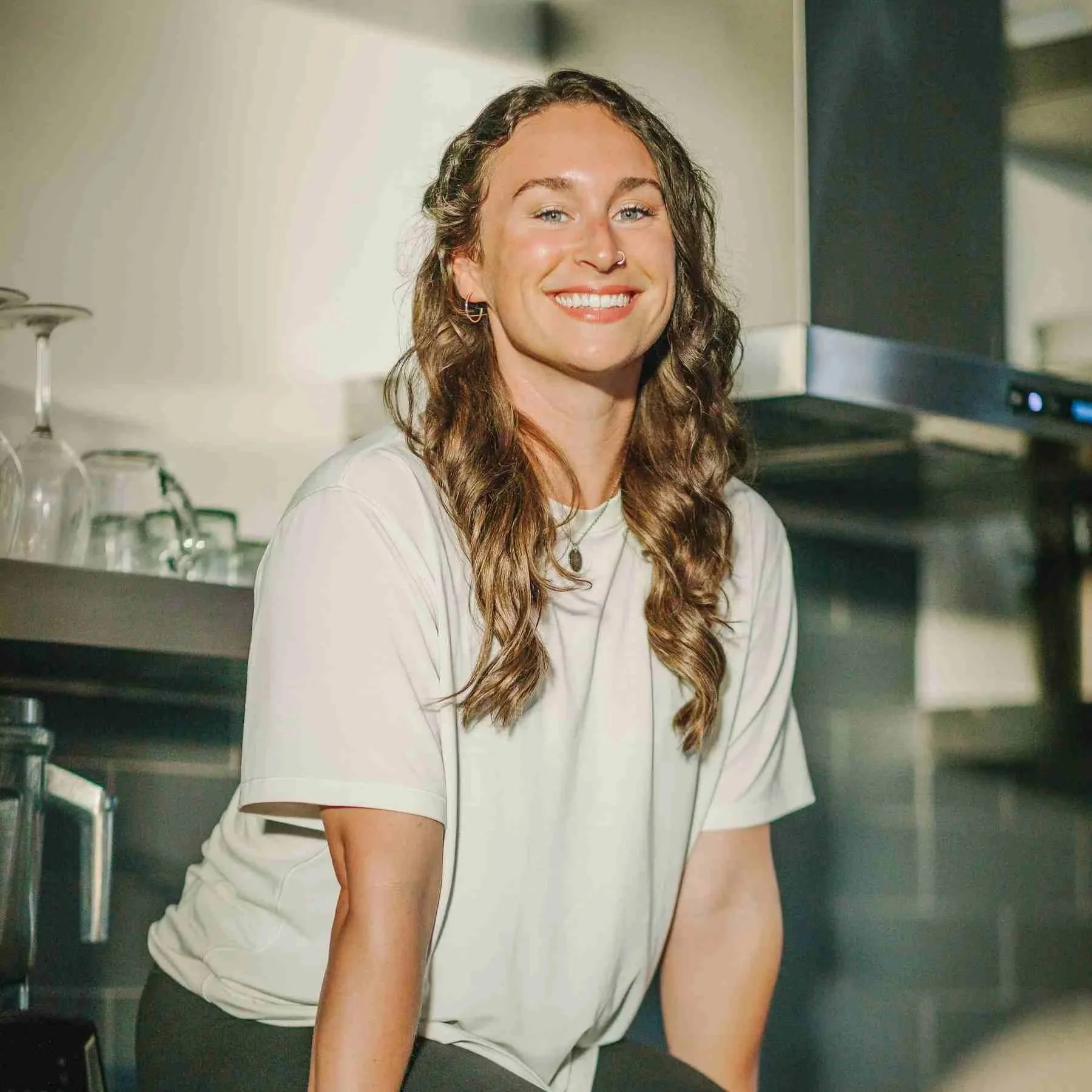
from the blog
Join our weekly newsletter & stay up to date with the latest posts.
Overeating Vs. Binge Eating: How To Know The Difference
It’s another Friday night, you head out with the girls, down a few Margaritas and tacos before returning home frustrated from your continued “lack of willpower” in maintaining a “healthy” lifestyle. Before you know it, you’ve grabbed the family-size bag of Doritos from the cabinet and polished off every last crumb while watching repeat episodes of Gilmore Girls…despite not actually feeling that hungry.
Alcohol And Menopause: What No One Tells You (But Should)
Let’s be honest: a crisp glass of Sauvignon Blanc after a long day can feel like a ritual. A margarita at girls’ night? Practically a sacred tradition. But if you’ve hit your 40s or 50s and started noticing that your go-to drink doesn’t go down (or stay down) quite like it used to, you’re not imagining things. As we transition into menopause, shifts in hormones, sleep, and temperature regulation are common -- including how our bodies handle alcohol. So, what gives? Why does that second glass of wine suddenly feel like a train crashing right into our bodies when ten years ago we were able to down two glasses before heading out to the bar for the bigtime fun stuff? Let’s break it down.
Transitioning from Macro Tracking to Intentional Eating: A Reminder That Tracking Isn't Forever
In the world of nutrition, tracking food intake can be a popular tool for building awareness of our eating habits and helping us to reach more specific goals (eating within a deficit, reaching a certain bare minimum for fiber intake, or even fueling for specific athletic-based performance). But what happens when we reach our goals? Do we continue tracking forever? The answer is absolutely not. Our goal isn’t to obsessively monitor every bite but to use tracking as a temporary tool to cultivate a deeper understanding of our relationship with food.
7 Tips for Accurate Macro Tracking From Online Nutrition Coaches
We work within a framework of tracking macros to facilitate sustainable progress and, eventually, move away from tracking completely. However, while tracking, there are some ways we can make it easier on ourselves! In this blog post, we’re sharing our favorite tracking tips as “macro coaches,” experienced trackers, and coaches who help our clients make tracking work for them.
Macro-Friendly Adult Lunchables: 30+ High Protein Snack Ideas
Welcome to your go-to guide for protein-packed snacks designed to keep you energized and satisfied throughout your busy day! When working with busy clients, we like to introduce the idea of an “Adult Lunchable” as a completely valid option for a high-protein snack that helps you meet your macro targets and keeps you fed even on the busiest days. Packed with protein and convenient enough to fit into your hectic schedule, these snacks will ensure you stay fueled and focused with at least 20 grams of protein, without compromising on taste or health. Dive in to discover both smart and delicious solutions for snacking at home or on the go!
Macro-Friendly Meals and Snacks at Disneyland and Disneyworld
Disneyland and Disney World: the places where dreams come true and nutrition dreams go to die…or do they? As with any out-of-routine time including vacations, work trips, anniversaries, date nights, birthdays, and holidays, we have to ask ourselves: What is the experience that I want to have during this brief time? and Does your expectation of your time away match the reality of the environment where you are going? The way that you feel during or after periods of time outside of your regular routines does not mean that any permanent changes occurred. Whether the journey of your nutrition while on your trip includes macro tracking or not, the main focus should be on making confident choices even if those choices are less efficient than normal.
Handling Holiday Meals and Out-of-Routine Times: Tracking Macros & Navigating Nutrition
Intentional out-of-routine times, like the upcoming Valentine’s Day holiday, tend to cause panic around meals where panic need not be warranted. Nutritional and lifestyle habits might need to temporarily change but managing expectations, having flexibility with our choices, and giving ourselves the permission to intentionally get out of our routines can ensure that those occasional meals stay exciting (not stressful!). Understanding and establishing the intentions of our meals gives us more control over how our meals make us feel. Remember: we have the power over food, food does not have the power over us.
Cronometer vs. MyFitnessPal: Comparing Macro Tracking Apps
Tracking calories has been largely utilized for various health and physique-related goals, and it is a tool we use often with our clients to help bring awareness to our eating habits. When it comes to tracking our macronutrients or calories, one of the first (and often overwhelming) steps is finding a tracking app that suits your needs. There are many apps out there that track the calories, macronutrients, and micronutrients in the foods we eat. Today we’re going to talk about the two most popular, MyFitnessPal and Cronometer.
Higher Protein Carbonara Pasta: A Healthy Pasta Dinner Recipe
It’s time to take a trip to Italy - or as close as we can get! Join me in putting a simple spin on a classic meal that seems to be consistently demonized for its higher-than-the-sky calorie counts.
Meet Kimberly Zehnder: Your Experienced Online Nutrition Therapy Practitioner
As nutrition coaches, we have the privilege of building close relationships with our clients as we help guide them toward their goals - be those related to aesthetics or fat loss goals, performance goals, or goals of optimal health. Along the way, as we work on building a better relationship with food and our habits, we get to share parts of our stories that are relevant to our coaching styles. We’re taking time this year to share more about us, our nutrition journeys and transformations, our road to becoming nutrition coaches and educators, and the amazing clients we have the privilege of working with.
Physical vs. Emotional Hunger: How to Identify Your Hunger Cues
Recognizing our hunger cues and the impact our environment can have on those cues is especially important for goals related to our nutrition. Establishing a difference between physical and psychological hunger is the first line of defense against any feelings of guilt, shame, or regret surrounding our food choices.
Why You Have No Appetite & What to Do About It
We often see tips for curbing an increased appetite, but what about those of us that consistently struggle with a lower appetite? Here are habits that can help you navigate having a low appetite.
How to Track a Recipe in Cronometer for Accurate Macros
Weighing and logging food is a super helpful tool in training our eyeballs to recognize more specific portion sizes. During food logging adventures, we are bound to begin diving into recipes rather than individual food items. Logging recipes can be extremely helpful for switching up typical meals each week or grouping together similar daily food items to make logging even quicker. We like the app Cronometer as it’s by far the most accurate tracking database and provides a lot of data that can be helpful along your macro tracking journey.
Debunking the Myth of Good vs. Bad Foods: The Key to a Better Relationship With Food
Our relationship with food is something that has been crafted over many years of familial influence, social gatherings, and trendy “quick grab” headlines. You likely have foods categorized into groups like “breakfast, lunch, dinner”, “good and bad”, “healthy and unhealthy”. While some of these categories might be useful, others might be a barricade built in front of our own food freedom.













